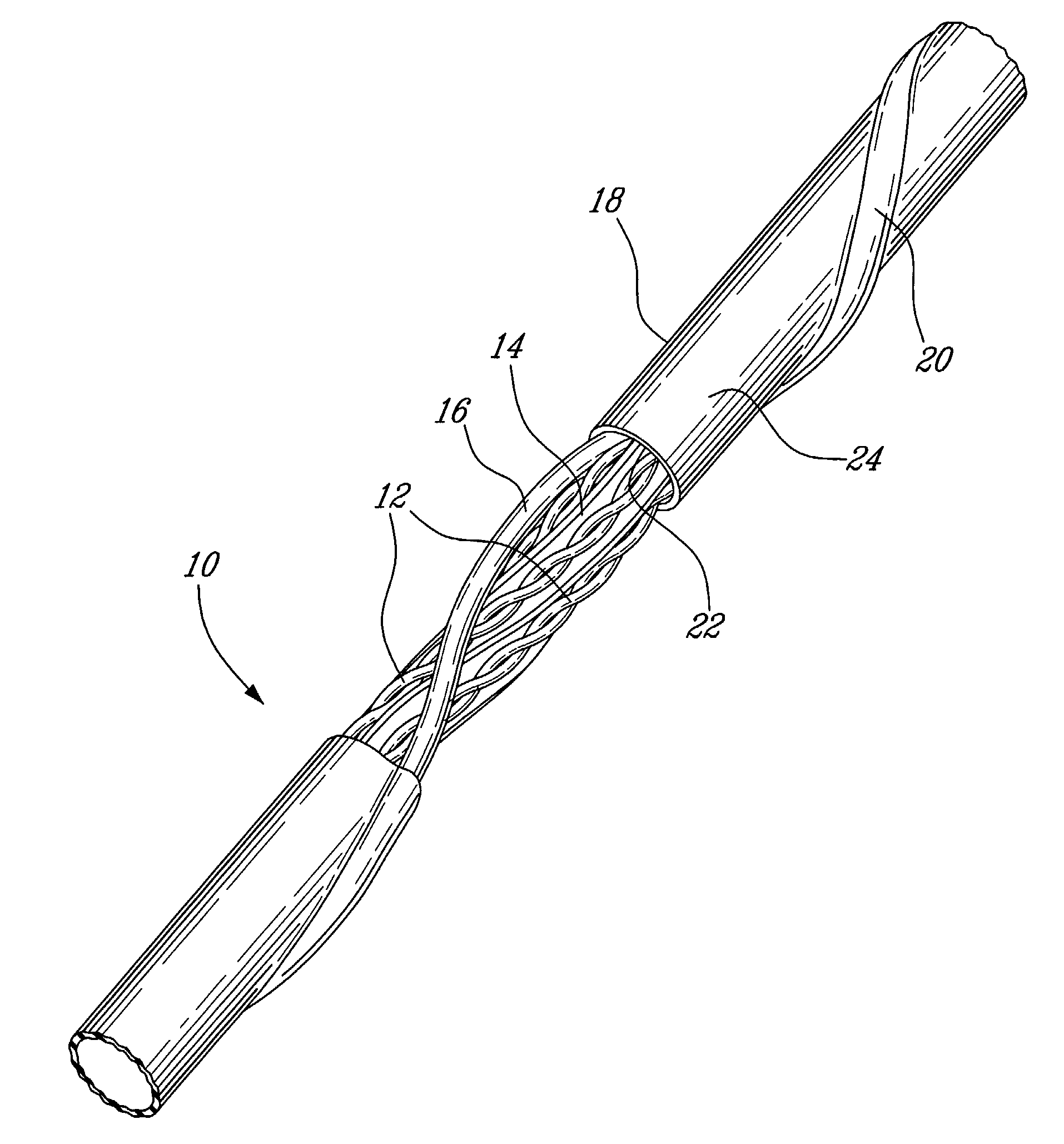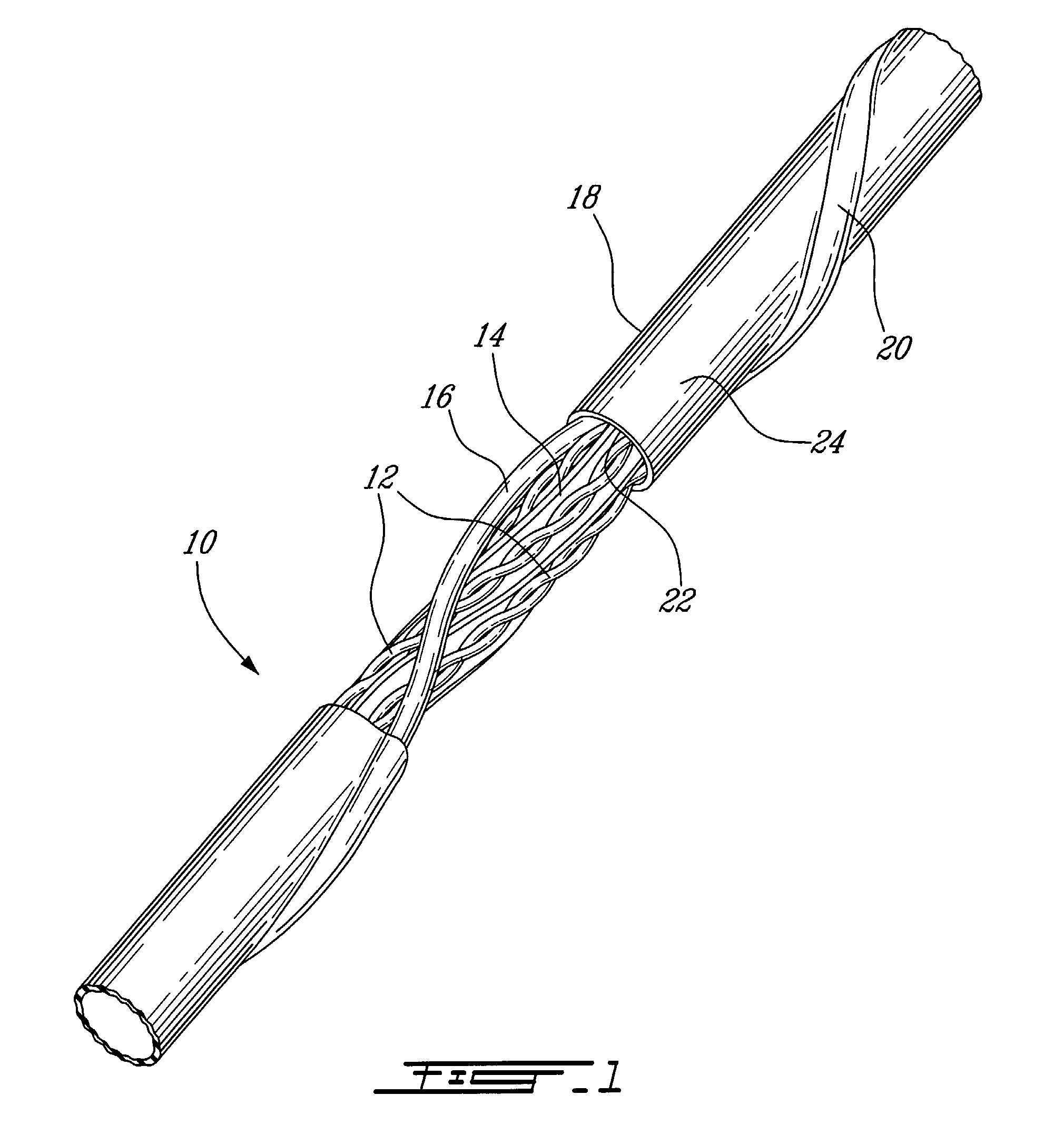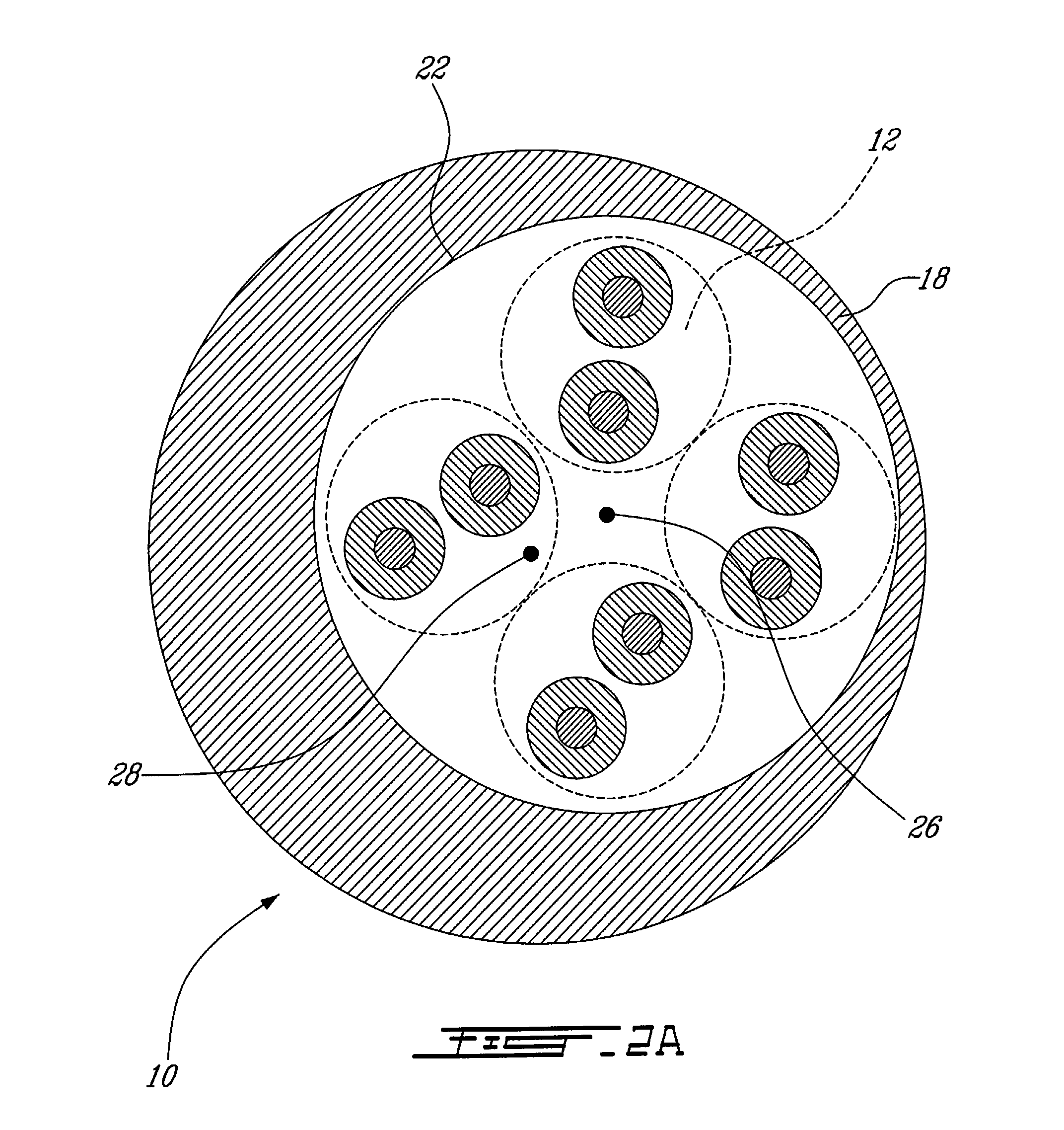High Performance Telecommunications Cable
a high-performance, telecommunications cable technology, applied in the direction of cables with twisted pairs/quads, etc., can solve the problems of twisted pair conductors and electromagnetic interference between twisted pair conductors, and achieve the effect of reducing cross talk
- Summary
- Abstract
- Description
- Claims
- Application Information
AI Technical Summary
Benefits of technology
Problems solved by technology
Method used
Image
Examples
Embodiment Construction
[0033]Referring now to FIG. 1, a telecommunications cable, generally referred to using the reference numeral 10 will now be described. The cable 10 is comprised of four twisted pairs of conductors as in 12. Each twisted pair 12 is twisted with a constant or variable or random twist lay, and the twist lay of different pairs of conductors is typically different. A separator spline 14 is provided for maintaining a spacing between the four twisted pairs of conductors as in 12. As known in the art, the spline 14 is typically manufactured from a non-conductive material such as pliable plastic or the like. The twisted pairs as in 12 as well as the spline 14 are in turn illustratively stranded together such that as one moves along the cable 10 the twisted pairs as in 12 and the spline 14 rotate helically around an axis located along the centre of the cable 10. In this regard, the strand lay of the twisted pairs as in 12 and the spline 14 may be constant or variable or random.
[0034]Still ref...
PUM
| Property | Measurement | Unit |
|---|---|---|
| oblique angle | aaaaa | aaaaa |
| angle | aaaaa | aaaaa |
| angle | aaaaa | aaaaa |
Abstract
Description
Claims
Application Information
 Login to View More
Login to View More - R&D
- Intellectual Property
- Life Sciences
- Materials
- Tech Scout
- Unparalleled Data Quality
- Higher Quality Content
- 60% Fewer Hallucinations
Browse by: Latest US Patents, China's latest patents, Technical Efficacy Thesaurus, Application Domain, Technology Topic, Popular Technical Reports.
© 2025 PatSnap. All rights reserved.Legal|Privacy policy|Modern Slavery Act Transparency Statement|Sitemap|About US| Contact US: help@patsnap.com



